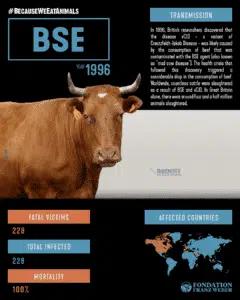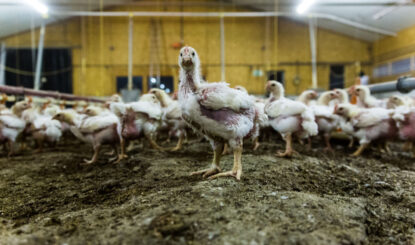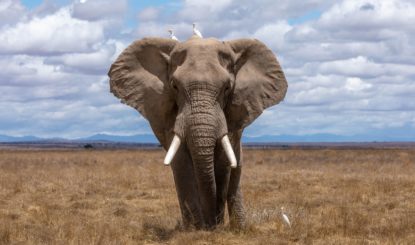#BecauseWeEatAnimals: BSE − Variant Creutzfeldt-Jakob disease (vCJD)
In 1996, British researchers discovered that the disease vCJD – a variant of Creutzfeldt-Jakob Disease – was likely caused by the consumption of beef that was contaminated with the BSE agent (also known as “mad cow disease”). The health crisis that followed this discovery triggered a considerable drop in the consumption of beef. Worldwide, countless cattle were slaughtered as a result of BSE and vCJD. In Great Britain alone, there were around four and a half million animals slaughtered.

Origin: vCJD is a zoonotic disease, meaning that it is transmitted from animals to humans. There is evidence to suggest a causal association between bovine spongiform encephalitis (BSE), popularly known as mad cow disease, and variant Creutzfeldt-Jakob disease (vCJD) in humans (CDC). Most detected cases of vCJD were caused by the consumption of bovine products contaminated by the infectious agent BSE (OIE, Collee, Bradley and Liberski, 2006).
Country: vCJD was first diagnosed in the United Kingdom (CDC).
Year: vCJD was identified in 1996 (CDC). The vCJD epidemic peaked in Europe between 1999 and 2004 (ECDC).
Fatality: 228 cases of vCJD in 12 countries (CDC). It is a neurodegenerative disease on average lasting 14 months (Heath et al., 2010).
Symptoms: According to the ECDC, patients initially present with psychiatric symptoms (often depression or anxiety) or sensory symptoms. Later, neurological symptoms appear such as ataxia, dementia and muscle spasms. The disease always progresses until death. vCJD tends to affect young people, with an average age of 28.
Social and economic implications:
In 2013 British researchers indicated that one in every two thousand people in the country would be carriers of the infectious prion protein that causes vCJD (Gill et al., 2013).
BSE lead to the massive slaughter of bovids, mostly in the European Union. According to data published by the press, the United Kingdom’s eradication programme ended the lives of approximately 4.4 million bovids (BBC).
The “mad cow” crisis lead to a considerable decrease in bovine meat consumption over a prolonged period. Great Britain and Spain suffered the biggest impact. Taylor et al. (2016) identified a reduction in meat consumption in the USA lasting approximately two years. South Korean consumers also lessened their meat intake in order to reduce risks to health, although there were no cases of BSE in South Korea (Joung jin, 2008).
The press reported that in the midst of the crisis, schools in Spain and Great Britain even banned bovine meat from school meals. By contrast, the fishing sector boomed economically, and Spanish companies such as Pescanova increased their share price by 50 % (Iragorri, 2001).
The price of bovine meat in Britain fell by 40 % despite cattle farming ‒ as in other countries ‒ having been viewed in Great Britain as a potentially highly profitable area for economic investment. The “mad cow” crisis hit small and medium-sized livestock farmers the hardest, who owned between 100 and 200 cows that had to be culled. In the end, a large number of cattle farmers filed for bankruptcy in several regions of the UK (Holmes, 1998).
More information:
- This documentary puts particular emphasis on the causal logic between bovine meat consumption and the emergence of neurological disorders in humans. From the emergence of ‘mad cow’ crisis in Great Britain, the video looks at the various social and economic effects of the virus outbreaks in a number of European countries over a couple of years. Schools, fairs, restaurants and whole countries reassessed their bovine meat sales, and even today there is discussion about whether or not this disease could inadvertently reappear, having originally come from cattle farming in England. Link to the video
- Read more on our project page «Corona and other pandemics»


